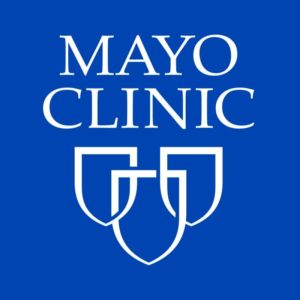Mayo Clinic Social Media Network: Shared Content and the Warm Arizona Sun [Podcast]
 [Healthcare Success Leadership Podcast] In this installment of our continuing educational series, Healthcare Success CEO Stewart Gandolf, [@StewartGandolf ] talks with Lee Aase, [@LeeAase], Director of the Mayo Clinic Social Media Network. #MCSMN
[Healthcare Success Leadership Podcast] In this installment of our continuing educational series, Healthcare Success CEO Stewart Gandolf, [@StewartGandolf ] talks with Lee Aase, [@LeeAase], Director of the Mayo Clinic Social Media Network. #MCSMN
The seventh Mayo Clinic Social Media Network Annual Conference will be held at the Mayo Clinic Scottsdale campus, December 11-12, 2017. In today’s podcast, Stewart and Lee discuss the upcoming conference, as well as:
- The evolution of social media in healthcare
- Individual and institutional reputation management
- Changes in the Facebook algorithm and visibility
- Secrets to getting good ideas for good content
- New technology and a look at the future
- Live video and streaming video in social media
- Outreach, teaching and learning through the network
- ‘Shared’ as the mother of all social metrics
Stewart and Lee talk about the evolution of MCSMN from its beginning in 2010 as a way for Mayo Clinic to plant its flag in social media for healthcare.
Related: 5 Best Healthcare Podcasts 2018
Lee also explains that today’s organization is in keeping with 150 years of history in doing “analog” social networking and word-of-mouth at Mayo Clinic. Today’s digital platforms provide the means for spreading information further and faster. What’s more, it enables communications beyond marketing and PR, including clinical practice communications, or using these tools in research, or other beneficial applications in healthcare.
STEWART GANDOLF: In hospitals in particular, there are always new people coming in, and the issues that were present when you first began are still present today. There may be new leadership, for example, in hospital administration. Questions like HIPAA and privacy and reputation. Are you still hearing those kinds of concerns and questions about social media from years ago?
LEE AASE: Yes, we definitely do. Those are still viable questions that people are asking. I think it’s getting to be a little less because this has become accepted as the way people are communicating. And the fact that we’ve had 8, 9, 10 years of experience with this at Mayo Clinic so it’s become more accepted.
STEWART: As we work with our clients, Facebook in particular has become the clear leader. And, as you know, they have changed their algorithm so that fewer posts are seen organically. Consequently, we have made a shift to paid in order to reach more people and people who might not have otherwise been reached. Can you talk about the changes that Facebook has made?
LEE: Sure. As Facebook has grown and now has more than two billion active monthly users, there’s a lot of content that they could show to any given user at any particular time. So, how are they going to prioritize that? They are going to show things first to close family and friends. But it also means is that there are more brands and organizations that want people to see their content, and to do so, they will need to pay for it.
On the other hand, there is still a huge premium on great content. For example, at Mayo Clinic we had our first face transplant and we announced that in February. We’ve had more reach on that with almost no paid promotion—reach of about 25 million with 10 million views of the video—being shared a thousand times an hour.
The goal is to get social followers to share the content with family and friends. So we’ve come to consider “shared” as the mother of all metrics. This is because if somebody likes your content that’s great…if they comment on it it’s wonderful, but when they share content they want friends to see it. They’re also telling the Facebook algorithm that it becomes one of those personal things as opposed to a brand sharing.
STEWART: For hospitals, social media is no longer new. It seems like most hospitals have a social media presence with an individual or perhaps a team that’s responsible. What are you finding? How do hospitals handle social media now? Do they have a committee, do they have an individual, or do they have someone doing it in their spare time?
LEE: It varies a lot by the size of the organization. The larger they are, the more likely they will have a dedicated person in their communications team who is responsible for social media. At Mayo, we currently have a team of eight people and feel extraordinarily blessed to be at that level. Part of the reason is because of our outreach commitment and willingness to help our colleagues through the network.
STEWART: Regarding this year’s conference, what are the things that people on the ground have as top of mind or challenges that they are dealing with today? What is it that’s topical?
LEE: We’ve talked about how Facebook is in a class by itself, so I think there’s going to be significant interest in learning how to make the most out of Facebook and how do we make it work for us as an organization. So, having Mari Smith as a keynote speaker and a voice of authority and experience is an excellent resource for attendees. And, I think that people are interested in recent crisis case studies that they can share…and what did we learn when it did happen?
STEWART: What are the secrets to getting good ideas for good content, especially when you are a small hospital or organization?
LEE: A big part of it is thinking like a storyteller. Stories have structure versus disjointed facts and figures. Having the ability to put the voice of the patient who has been through an experience into the message and telling the story in a compelling way. Another would be using things like live video and streaming/recorded video, which are important tools for interaction. Also, the use of images is critical to draw attention—not stock images—but using good unique and original photography.
STEWART: What do you think the future will look like for social media? What kinds of changes and trends do you expect to see?
LEE: Facebook is going to remain important; it and Google and Apple have staked out dominant positions. But technology is bringing newer things to the front, such as Alexa and voice search, Artificial Intelligence (AI), and those are the things that we need to explore. This is also where the SM network is able to bring together people who can talk about that kind of issue and help form the discussion for future conferences.
STEWART: One of the things that I admire about the work that you’ve done is that it’s forward thinking. A lot of hospitals, understandably, are inward looking, but at Mayo it seems to be part of your culture to be outward thinking. It’s clearly a cultural thing.
As a last question, please give our listeners and readers an understanding of who should attend the annual conference and the social media residency.
LEE: First of all, I would invite everyone to go to SocialMedia.MayoClinic.org. We have two events. The first is our annual conference, which is December 11 and 12 at our Mayo Clinic campus in Scottsdale, Arizona. That’s the two-day conference where we’ll have six case studies, four keynote addresses and four expert consultation sessions. This is for people who are leading social media in their organization and want to educationally “sharpen the saw” and polish their skills.
The third day, December 13, is the second event, our Social Media Residency. The idea behind that is a chance for people who are developing strategic plans for a particular function, or a service line, or for an organization as a whole.
FOR MORE INFORMATION: MAYO CLINIC SOCIAL MEDIA NETWORK ANNUAL CONFERENCE
Mayo Clinic campus in Scottsdale, Arizona for #MCSMN, the Mayo Clinic Social Media Annual Conference (Dec. 11-12, 2017) and Social Media Residency (Dec. 13, 2017).








